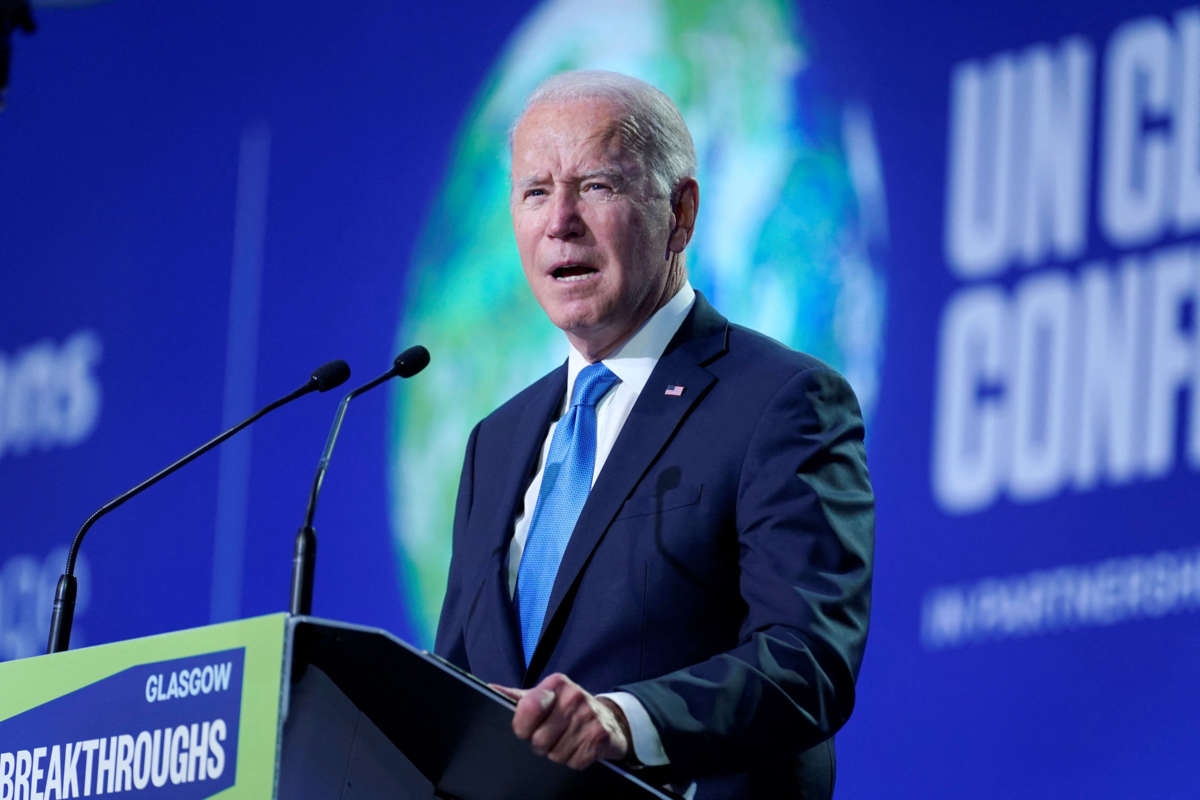The U.S. has fallen tens of billions of dollars short of paying its agreed-upon “fair share” of climate funding targets, a new report finds as world leaders undergo climate talks at the COP27 conference in Egypt this month.
According to a new analysis by Carbon Brief, the U.S. was supposed to be paying about $40 billion of the U.S.$100 billion that wealthy countries have pledged to pay each year for climate financing in developing countries by 2020. This figure is proportional to the amount of historical emissions emitted by each country; the U.S. is a top emitter of greenhouse gasses and is responsible for about 52 percent of historical emissions by wealthy countries.
However, the analysis of 2020 data, the closest year for which data is available, found that the U.S. paid only $7.6 billion that year into that goal. This represents only about 19 percent of its fair share.
Other wealthy countries are also falling behind, though the U.S. is proportionately the worst offender. Canada only gave 37 percent of its fair share, the report found, while Australia gave 38 percent and the U.K. gave 76 percent. Germany, France and Japan provided more than their fair share, but their funding is in the form of loans and not grants, which are only further marginalizing recipients by making them indebted to these countries.
Overall, only $83 billion of climate financing was given in 2020, with $60 billion coming from countries and $23 billion coming from climate funding organizations and private sources.
Wealthy countries had agreed to the $100 billion target in 2009 in order to help poorer countries adapt climate-friendly energy sources and fund resiliency measures like infrastructure and farming.
Wealthy countries released a roadmap in 2021 to reach the $100 billion goal by 2023, which would miss the original goal by two years. Further, research shows that $100 billion is a miniscule amount of funding compared to what is actually needed to build resiliency and keep the climate crisis in check in poorer countries.
Analysts and advocates say that the money is crucial not just to maintain a liveable planet but also to advance climate justice.
The failure to fund the target will be crucial to talks at COP27, which began on Sunday. Though countries in the Global South have not contributed significantly to the climate crisis, they are and will continue to be the hardest hit by the climate crisis, as they have fewer resources to respond to climate disasters like heat waves and floods.
Countries like the U.S., meanwhile, have contributed greatly to the crisis, but continually fail to commit to action that is strong enough to meet the goal of limiting global warming to 1.5 degrees Celsius or lower; the United Nations has found that there is “no credible pathway to 1.5C in place” for the world to reach.
The report is a show of how the U.S. is shirking its international responsibility to mitigate the climate crisis even though $40 billion is an almost negligible amount of money to spend on climate goals when compared to the hundreds of billions of dollars the U.S. spends on defense each year — much of which goes toward private defense contractors — or the trillions of dollars that the government allows the wealthy to hoard with sweeping tax cuts.
Our most important fundraising appeal of the year
December is the most critical time of year for Truthout, because our nonprofit news is funded almost entirely by individual donations from readers like you. So before you navigate away, we ask that you take just a second to support Truthout with a tax-deductible donation.
This year is a little different. We are up against a far-reaching, wide-scale attack on press freedom coming from the Trump administration. 2025 was a year of frightening censorship, news industry corporate consolidation, and worsening financial conditions for progressive nonprofits across the board.
We can only resist Trump’s agenda by cultivating a strong base of support. The right-wing mediasphere is funded comfortably by billionaire owners and venture capitalist philanthropists. At Truthout, we have you.
We’ve set an ambitious target for our year-end campaign — a goal of $250,000 to keep up our fight against authoritarianism in 2026. Please take a meaningful action in this fight: make a one-time or monthly donation to Truthout before December 31. If you have the means, please dig deep.
